PROFINET Siemens
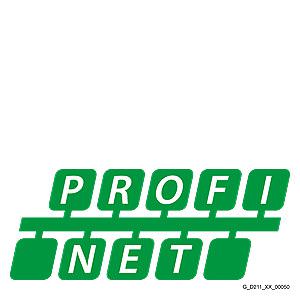
Обзор
PROFINET is the innovative and open Industrial Ethernet standard (IEC 61158) for industrial automation. With PROFINET, devices can be linked up from the field level through to the management level.
PROFINET enables system-wide communication, supports plant-wide engineering and applies IT standards right down to the field level. IT communication, data communication and cyclic process communication are combined on the basis of Industrial Ethernet.
Existing fieldbus systems such as PROFIBUS can be easily integrated without any modification of existing devices.
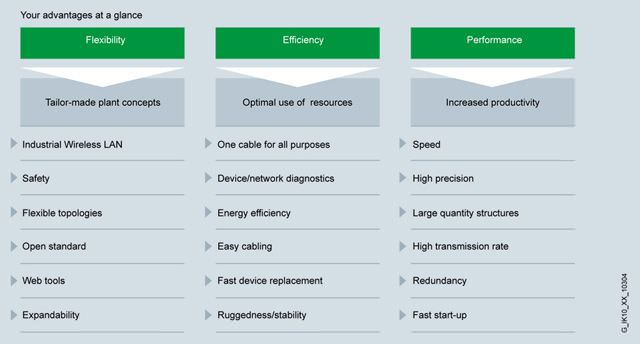
Дизайн
PROFINET device concept
PROFINET distinguishes between the controller and its assigned devices. These are initialized and parameterized by the controllers on power-up. The controller and its devices together constitute a PROFINET I/O system (compare master/slave system for PROFIBUS).
For PROFINET, cyclic communication between an IO Controller and its IO Devices is performed in the same way as for PROFIBUS over the process image. The process image is updated cyclically. Depending on the requirements and device characteristic, this takes place in real-time (RT, devices are typically distributed IO Devices) or isochronous real-time (IRT, devices are typically servo drives). Further, PROFINET permits communication between the controllers and devices of different IO systems.
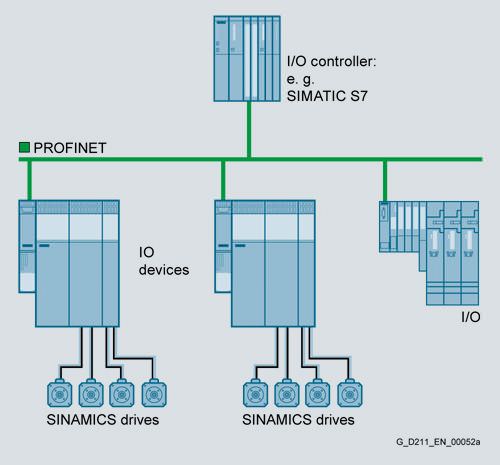
PROFINET IO with RT for simple standard drive applications
With typical cycle times between 4 ms and 10 ms, PROFINET IO with RT offers the same performance characteristics as PROFIBUS as regards cyclic data transmission.
With this performance level, all standard drive applications belonging to PROFIdrive application categories 1 to 3 can be automated, i.e. those categories requiring the specification of speed, torque and current setpoints or target positions which do not need to be linked isochronously.
PROFINET IO with IRT for Motion Control1)
In this case, a Motion Control system controls or synchronizes axes using the PROFINET network. This requires cyclic, isochronous data exchange with the drives. PROFINET IO with IRT fulfills this requirement. The communication cycle is subdivided into different, time-specific channels for this purpose. The first channel is used for isochronous real-time communication (IRT), followed by real-time communication (RT) and standard TCP/IP communication. By appropriately configuring the application, e.g. a synchronous relationship between axes, IRT telegrams are implicitly determined and the appropriate configuration data generated.
The optimum time sequence of the individual messages for each network section is calculated with a special algorithm which takes the topology into account. This means that the switch is in a position to transfer the IRT telegrams without delay from the input port to the defined output port and then to the target device.
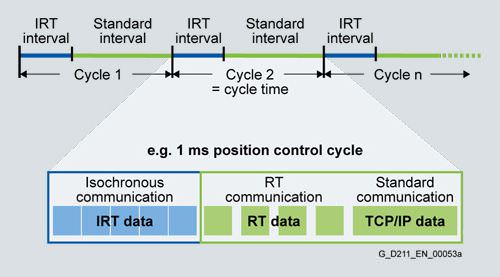
Transition from PROFIBUS to PROFINET
The functional interface between the controller and the SINAMICS drives for PROFINET and PROFIBUS is defined by the PROFIdrive V4 of PROFIBUS International. It is not necessary to change an user program for transfer from PROFIBUS to PROFINET.
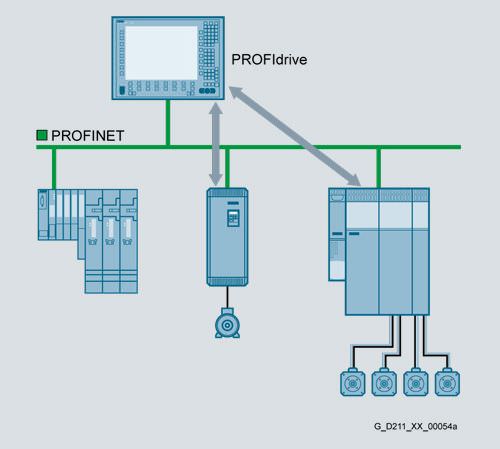
PROFINET with PROFIdrive
Motion Control concepts with PROFINET
With SINAMICS, PROFINET supports the implementation of different automation structures. Distributed drive-based motion control concepts or central architectures with a control are supported in the same way as distributed automation solutions with modular automation components.
PROFINET – interface on SINAMICS
- SINAMICS S120 with a CU320-2 DP Control Unit and a CBE20 Communication Board
The CU320-2 DP Control Unit on SINAMICS S120 is linked to the PROFINET IO network via the CBE20 Communication Board. - SINAMICS S120 with a CU320-2 PN Control Unit
The CU320-2 Control Unit on SINAMICS S120 is linked to the PROFINET IO network via the on-board PROFINET interface. - SINAMICS S120 with a CU320-2 PN Control Unit and a CBE20 Communication Board
The CU320-2 PN Control Unit on SINAMICS S120 is linked to the PROFINET IO network via the CBE20 Communication Board. - SINAMICS S120 with a CU310-2 PN Control Unit
The CU310-2 PN Control Unit on SINAMICS S120 is linked to the PROFINET IO network via the on-board PROFINET interface.
1) IRT interpolation with SINUMERIK NCK coming soon
Функции
Real-time communication with PROFINET IO
PROFINET uses standard TCP/IP for parameter assignment, configuration and diagnostics. Real-time communication for the transmission of process data is performed on the same line. PROFINET IO has the following real-time features:
- Real Time (RT)
uses the option of prioritizing the communication stack of the bus nodes. This permits high-performance data transmission based on standard network components. - Isochronous Real-Time (IRT)
permits strict deterministic, cyclic data transmission with short response times and minimum jitter for high performance motion control applications. This feature is implemented with a special ASIC, named ERTEC (Enhanced Real Time Ethernet Controller), in the corresponding interfaces (switch integrated into device) or network components (switch).
Automation with PROFINET
With these and other features, PROFINET fulfills all automation requirements: Industry-compatible installation technology, real-time capability, deterministic responses, integration of distributed field devices, simple network administration and diagnosis, protection against unauthorized access, efficient vendor-independent engineering as well as isochronous motion control applications.
PROFINET relies on switch technology and has expanded this technology for real-time applications (IRT). This has the advantage that the network topology can be optimally utilized, since it can be adapted to the requirements of the machine. Collisions are avoided and therefore optimum data flow rates achieved.







 Ответ от производителя может занять до 5 дней и более.
Ответ от производителя может занять до 5 дней и более.

